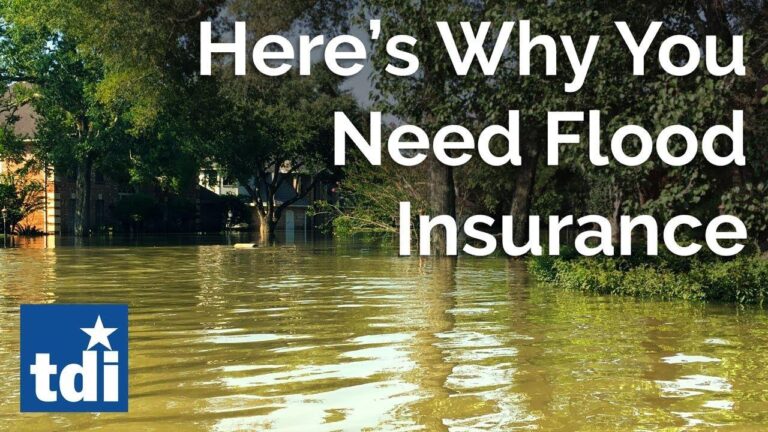Texas Flood Insurance at Risk: What Residents Must Know Amid Congressional Deadlock
Impending Threat to Flood Insurance Coverage for Texans
Texans are confronting a pressing challenge as Congress remains deadlocked over a federal spending bill critical to extending the National Flood Insurance Program (NFIP). Should lawmakers fail to act promptly, thousands of Texans could lose access to federally backed flood insurance, a vital safeguard for homes and businesses in flood-vulnerable regions. This uncertainty is especially alarming given the increasing frequency and severity of flooding events linked to climate change, underscoring the urgent need for reliable flood protection.
Essential facts to consider:
- Interruption in coverage: Without an extension, no new flood insurance policies can be issued or renewed after the current authorization expires.
- Financial repercussions: Homeowners lacking flood insurance may face overwhelming repair and rebuilding expenses out of pocket.
- Community consequences: Local governments risk losing federal funding for flood control and mitigation initiatives if the NFIP lapses.
| Key Date | Event |
|---|---|
| June 30 | Expiration of current NFIP authorization |
| July 1 onward | Suspension of new flood insurance policy sales and renewals |
| August 15 | Possible congressional resolution deadline |
How Flood Insurance Disruption Could Affect Texas Homeowners and Communities
For residents in Texas’s flood-prone areas, the potential discontinuation of NFIP coverage presents a daunting financial threat. Without federal flood insurance, many homeowners may be forced to turn to costly private insurance markets or face the risk of being uninsured altogether. This shift could lead to prohibitive premiums or complete lack of coverage options, leaving families vulnerable to catastrophic losses after flood events. Additionally, property values in these high-risk zones may decline sharply, further destabilizing local economies and limiting homeowners’ ability to relocate or recover.
Communities dependent on flood insurance for disaster resilience could see their recovery capacity severely weakened. The absence of NFIP support may result in:
- Decreased funding for flood control infrastructure and repairs due to diminished property tax revenues.
- Increased property abandonment and neighborhood deterioration as residents relocate to safer areas.
- Greater strain on municipal resources tasked with emergency response and public service restoration.
| Area of Impact | Likely Outcome |
|---|---|
| Homeowner Finances | Exposure to high out-of-pocket rebuilding costs |
| Community Stability | Property value depreciation and economic downturn |
| Emergency Services | Increased demand with limited capacity |
Economic and Recovery Challenges Stemming from Flood Insurance Gaps
The suspension of NFIP coverage threatens to inflict severe damage on Texas’s local economies, particularly in areas still recovering from recent hurricanes and floods. Without dependable flood insurance, both homeowners and businesses face heightened financial vulnerability, which could depress real estate markets and deter new investments. This economic uncertainty may also elevate borrowing costs, slowing growth in flood-affected communities. Municipal budgets could come under pressure as uninsured losses increase the need for emergency aid and social services.
Disaster recovery efforts are likely to be hampered significantly if flood insurance programs are not maintained. The financial security provided by these policies is crucial for timely rebuilding, and their absence could prolong recovery periods. Key concerns include:
- Reduced access to funds: Homeowners may struggle to finance repairs or reconstruction.
- Greater dependence on government aid: Stretching already limited emergency resources.
- Delays in restoring critical infrastructure: Threatening public safety and economic vitality.
| Sector | Potential Impact |
|---|---|
| Housing Market | Decline in property values and market stagnation |
| Business Community | Increased operational risks and insurance expenses |
| Emergency Response | Higher demand with fewer resources available |
Proactive Steps Texans Can Take to Shield Their Properties
Given the looming threat of losing federally backed flood insurance, Texans should take immediate action to protect their assets. Exploring private flood insurance options is a vital first step, as some insurers continue to offer coverage even if the NFIP is temporarily unavailable. Additionally, homeowners can reduce flood damage risks by implementing structural improvements such as elevating electrical systems, installing flood-resistant vents, and maintaining sump pumps. Keeping detailed records of possessions with photos and receipts will also facilitate smoother insurance claims if flooding occurs.
Recommended precautions for residents include:
- Consulting with licensed insurance professionals to assess private flood insurance alternatives.
- Reviewing updated floodplain maps and local risk assessments to understand evolving threats.
- Improving property drainage through landscaping adjustments.
- Monitoring legislative updates regarding flood insurance funding and policy changes.
- Preparing a comprehensive flood emergency kit containing essential documents, supplies, and evacuation plans.
| Recommended Action | Objective | Suggested Timeline |
|---|---|---|
| Private Insurance Review | Identify alternative coverage options | Within 30 days |
| Property Floodproofing | Minimize potential water damage | 3 to 6 months |
| Flood Risk Assessment Updates | Stay informed on changing flood zones | Ongoing |
| Emergency Preparedness Kit | Ensure readiness for flood events | Immediately |
Final Thoughts: The Urgency of Legislative Action to Protect Texans
As the deadline for congressional approval of the federal spending package nears, the risk of losing access to essential flood insurance coverage becomes increasingly real for Texans. Without swift and decisive action from lawmakers, countless residents may face severe financial hardship in the wake of future floods. It is critical that Congress reaches an agreement to maintain uninterrupted flood insurance programs, thereby safeguarding vulnerable communities throughout Texas from escalating flood risks. Stay tuned for ongoing updates as this situation develops.




